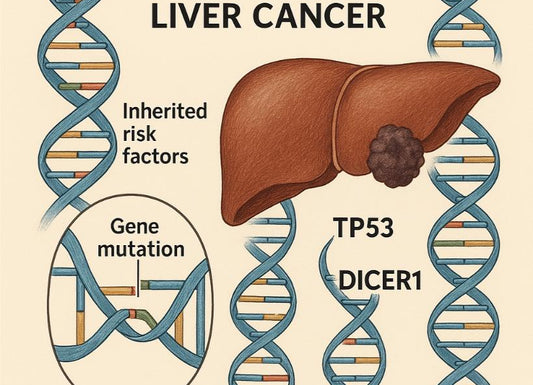Is Kidney Disease Genetic? Role of Family History
 Written By
Jaclyn P. Leyson-Azuela, RMT, MD, MPH
Written By
Jaclyn P. Leyson-Azuela, RMT, MD, MPH

Your family history might hold important clues about your kidney health. Understanding whether kidney disease runs in families can help you make informed decisions about monitoring and prevention.
This article explores the genetic factors behind kidney disease, early warning signs to watch for, and practical steps you can take to protect your kidneys. We'll also discuss how at-home monitoring tools can help you stay on top of your kidney health between doctor visits.
Key Insights
-
Genetic factors play a significant role - Some kidney diseases like polycystic kidney disease are directly inherited, while others have genetic components that increase risk
-
Family history matters tremendously - Having relatives with kidney disease increases your chances of developing similar conditions by 20-90% depending on the specific disease
-
Early detection saves kidneys - Most kidney diseases show no symptoms until 60-90% of kidney function is lost, making regular monitoring crucial
-
At-home testing helps - Urine test strips can detect protein, blood, and other markers that may indicate kidney problems before symptoms appear
-
Prevention works - Managing blood pressure, blood sugar, and maintaining a healthy weight can prevent up to 50% of kidney disease cases
-
Children can inherit kidney diseases - Some genetic kidney conditions appear in childhood, while others may not show symptoms until adulthood
What are the top risk factors for kidney disease?
The biggest risk factors for kidney disease include both genetic and lifestyle elements. Diabetes stands as the leading cause, responsible for about 30-40% of all kidney failure cases. High blood pressure comes in second, accounting for roughly 25% of cases.
Your family history creates one of the strongest risk factors you cannot control. If your parents or siblings have kidney disease, your risk increases dramatically. African Americans, Native Americans, Hispanics, and people of Asian descent face higher genetic risks for certain types of kidney disease.
Age plays a crucial role since kidney function naturally declines after age 40. Men develop kidney disease more frequently than women, though the reasons remain unclear. Obesity strains your kidneys by increasing blood pressure and diabetes risk.
Other significant risk factors include:
-
Heart disease or previous heart attacks
-
Autoimmune diseases like lupus
-
Frequent use of pain medications (NSAIDs)
-
Smoking tobacco products
-
Kidney stones or urinary tract infections
-
Previous acute kidney injury
Understanding these risk factors helps you recognize when genetic testing or closer monitoring might benefit your health.

What are the early warning signs of genetic kidney diseases?
Genetic kidney diseases often hide their presence for years or even decades. Most people don't experience symptoms until their kidneys lose 60-90% of their function. This silent progression makes recognizing subtle early signs critical.
Changes in urination patterns serve as important early indicators. You might notice foamy or bubbly urine, which suggests protein leakage. Blood in urine creates a pink, red, or cola-colored appearance. Increased urination at night or difficulty starting urination can signal problems.
Physical symptoms develop gradually and might seem unrelated to kidney function. Persistent fatigue occurs because damaged kidneys produce less of the hormone that stimulates red blood cell production. Swelling in your ankles, feet, hands, or face indicates fluid retention.
Additional warning signs include:
-
Unexplained nausea or loss of appetite
-
Metallic taste in your mouth
-
Muscle cramps or restless legs
-
Difficulty concentrating or memory problems
-
Shortness of breath during normal activities
-
High blood pressure that's difficult to control
-
Recurring skin rashes or severe itching
Children with genetic kidney diseases might show different symptoms like poor growth, frequent urinary tract infections, or bed-wetting beyond the typical age.
How does a nephrologist diagnose kidney disease?
A nephrologist uses multiple tests to confirm kidney disease and find its cause. Blood tests measure creatinine levels. These levels rise when kidneys cannot filter waste properly. The estimated glomerular filtration rate (eGFR) shows how well your kidneys work compared to normal function.
Urine tests show crucial information about kidney damage. Protein in urine (proteinuria) suggests the kidney's filtering system is damaged. Blood cells, bacteria, or strange crystals give additional clues. A 24-hour urine collection gives more precise measurements than single samples.
Imaging tests help see kidney structure and spot problems. Ultrasounds show kidney size, shape, and blood flow without radiation. CT scans provide detailed pictures of kidney anatomy. They can detect stones, cysts, or tumors. MRI scans offer excellent soft tissue contrast for complex cases.
The diagnostic process typically follows this order:
-
Medical history and physical exam
-
Basic blood and urine tests
-
Imaging studies if initial tests show problems
-
Kidney biopsy for unclear cases
-
Genetic testing when hereditary diseases are suspected
-
Specialized tests for specific conditions
Your nephrologist might order genetic counseling if your family history suggests inherited kidney disease. This helps determine which family members might benefit from screening or preventive steps.

Are kidney stones considered kidney disease?
Kidney stones themselves are not kidney disease, but they can contribute to kidney damage over time. Stones form when minerals and salts crystallize in concentrated urine. Most stones pass naturally without causing permanent harm to kidney function.
However, large stones or frequent stone formation can lead to complications. Stones that block urine flow create pressure that damages kidney tissue. Repeated infections from stones can cause scarring. People who form multiple stones have a higher risk of developing chronic kidney disease later in life.
The relationship between stones and kidney disease depends on several factors:
-
Size and location of stones
-
Frequency of stone formation
-
Presence of infections
-
Underlying metabolic disorders
-
How quickly stones are treated
Are kidney stones hereditary?
Yes, kidney stones show strong hereditary patterns. If your parents or siblings have had kidney stones, your risk increases by 2.5 times compared to people without family history. Certain genetic variations affect how your kidneys handle minerals like calcium, oxalate, and uric acid.
Some inherited conditions directly cause stone formation. Primary hyperoxaluria results from genetic enzyme defects that create excessive oxalate production. Cystinuria causes amino acid crystals to form stones. These rare genetic disorders require specialized treatment and monitoring.
More commonly, families share genetic tendencies that make stone formation more likely:
-
Abnormal calcium handling by the kidneys
-
Reduced citrate production (citrate prevents stones)
-
Increased oxalate absorption from food
-
Altered uric acid metabolism
-
Kidney anatomy variations that slow urine flow
Environmental factors shared by families also contribute. Similar diets, water intake habits, and activity levels affect stone risk across generations.
Is kidney disease genetic?
Yes, many types of kidney disease have genetic components. Some kidney diseases result directly from inherited gene mutations, while others develop from a combination of genetic susceptibility and environmental factors. Understanding your genetic risk helps guide prevention and monitoring strategies.
Single-gene disorders cause specific inherited kidney diseases. These conditions follow predictable inheritance patterns that genetic counselors can explain to families. Examples include polycystic kidney disease, Alport syndrome, and Fabry disease. Each parent with these conditions has a 50% chance of passing the gene mutation to their children.
Complex genetic factors contribute to more common kidney diseases like diabetic kidney disease and high blood pressure-related kidney damage. These conditions result from multiple genetic variations combined with lifestyle factors. Having relatives with these diseases increases your risk, but inheritance patterns are less predictable.
Genetic factors influence kidney disease through several mechanisms:
-
Direct gene mutations that affect kidney structure or function
-
Genetic variations that increase diabetes or high blood pressure risk
-
Inherited immune system differences that affect autoimmune diseases
-
Genetic factors that influence drug metabolism and toxicity
-
Inherited traits that affect kidney development before birth
Can chronic kidney disease be inherited?
Chronic kidney disease (CKD) can have inherited components, though most cases result from diabetes or high blood pressure rather than direct genetic causes. When CKD runs in families, it often reflects shared genetic susceptibilities to conditions that damage kidneys over time.
Genetic factors that increase CKD risk include variants in genes controlling blood pressure regulation, glucose metabolism, and inflammation responses. African Americans have genetic variations that increase their risk of high blood pressure-related kidney disease. People of Hispanic descent show higher rates of diabetic kidney disease partly due to genetic factors.
Some families carry mutations in genes directly affecting kidney function. These rare genetic forms of CKD include:
-
Hereditary nephritis (Alport syndrome)
-
Genetic forms of focal segmental glomerulonephritis
-
Inherited complement system disorders
-
Rare metabolic diseases affecting the kidneys
Family clustering of CKD often results from shared environmental factors combined with genetic susceptibility. Families may share dietary habits, exposure to toxins, or lifestyle patterns that affect kidney health across generations.

Which kidney disease is known to be inherited?
Several kidney diseases follow clear inheritance patterns that families can predict and plan for. Polycystic kidney disease represents the most common inherited kidney disorder, affecting about 1 in 400-1,000 people worldwide. This condition causes fluid-filled cysts to grow throughout both kidneys over time.
Alport syndrome affects the kidney's filtering system and also causes hearing loss and eye problems. This genetic disorder results from mutations in genes that produce collagen, a protein essential for kidney structure. Men typically experience more severe symptoms than women.
Other well-known inherited kidney diseases include:
-
Fabry disease–A rare genetic disorder affecting kidney function, heart, and nervous system
-
Hereditary nephritis–Various genetic forms that cause progressive kidney damage
-
Cystinosis–A metabolic disorder where crystals accumulate in kidneys and other organs
-
Primary hyperoxaluria–Genetic enzyme defects leading to kidney stone formation and damage
-
Gitelman syndrome–Inherited electrolyte imbalances affecting kidney salt handling
-
Bartter syndrome–Genetic disorders of kidney salt transport
How is polycystic kidney disease inherited?
Polycystic kidney disease (PKD) follows two main inheritance patterns depending on which genes are involved. Autosomal dominant PKD affects about 90% of people with this condition and typically shows symptoms in adulthood. Autosomal recessive PKD is rarer and usually appears in infancy or childhood.
In autosomal dominant PKD, each child of an affected parent has a 50% chance of inheriting the condition. The PKD1 gene mutation causes about 85% of cases and tends to progress more rapidly than PKD2 mutations. People with PKD1 typically develop kidney failure around age 50-60, while PKD2 patients may maintain kidney function until their 60s or 70s.
Autosomal recessive PKD requires both parents to carry gene mutations, even if they don't have the disease themselves. Each child of two carriers has a 25% chance of developing the condition. This form typically causes more severe symptoms earlier in life.
PKD progression varies significantly even within families carrying the same genetic mutation. Factors that influence disease severity include:
-
Specific location of the gene mutation
-
Presence of additional genetic modifiers
-
Blood pressure control throughout life
-
Kidney infections or other complications
-
Overall health and lifestyle factors
Are kidney diseases found in children?
Yes, children can develop both inherited and acquired kidney diseases. Genetic kidney diseases often appear during childhood, though some may not cause symptoms until adulthood. About 1 in 750 children is born with some form of kidney or urinary tract abnormality.
Inherited kidney diseases that commonly affect children include congenital anomalies of the kidneys and urinary tract (CAKUT), which represent the most frequent cause of childhood kidney failure. These conditions result from genetic disruptions during kidney development before birth.
Common childhood kidney conditions include:
-
Posterior urethral valves
-
Reflux nephropathy
-
Polycystic kidney disease
-
Alport syndrome
-
Nephrotic syndrome
-
Acute glomerulonephritis
Children with genetic kidney diseases may show symptoms like poor growth, frequent urinary tract infections, high blood pressure, or blood in their urine. Early diagnosis helps prevent complications and allows families to plan for future care needs.
Is unilateral renal agenesis hereditary?
Unilateral renal agenesis means being born with only one kidney instead of two. This condition has genetic components in many cases, though environmental factors during pregnancy can also play a role. About 1 in 1,000-2,000 people are born with this condition.
Studies show that unilateral renal agenesis runs in some families, suggesting genetic causes. Researchers have identified several genes that, when mutated, can prevent one kidney from developing properly during pregnancy. These genetic factors may follow complex inheritance patterns rather than simple dominant or recessive patterns.
Risk factors for inherited unilateral renal agenesis include:
-
Family history of kidney abnormalities
-
Genetic syndromes affecting multiple organ systems
-
Chromosomal abnormalities
-
Exposure to certain medications during pregnancy
-
Maternal diabetes or other health conditions
Most people with one healthy kidney live normal lives without complications. However, the remaining kidney works harder throughout life, which may increase the risk of developing high blood pressure or kidney disease later. Regular monitoring helps detect any problems early.
Is it possible to have kidney disease and not know it?
Yes, kidney disease is often called a "silent killer" because it typically causes no symptoms until significant damage has occurred. Most people don't realize they have kidney problems until their kidneys lose 60-90% of their normal function. This silent progression makes kidney disease particularly dangerous and difficult to detect without testing.
Your kidneys have remarkable reserve capacity, meaning they can continue filtering waste and maintaining fluid balance even when substantially damaged. This protective mechanism helps you feel normal while kidney disease progresses silently over months or years.
The lack of early symptoms occurs because kidney damage happens gradually. Unlike a heart attack or broken bone, kidney damage doesn’t cause sudden, obvious pain or disability. Instead, your body adapts to slowly declining kidney function until the remaining healthy tissue can no longer compensate.
Warning signs that may indicate hidden kidney disease include:
-
Persistent fatigue that doesn’t improve with rest
-
Subtle swelling in ankles or hands
-
Changes in urination frequency or appearance
-
Unexplained high blood pressure
-
Poor appetite or metallic taste in the mouth
-
Difficulty sleeping or concentrating
This is why regular screening becomes crucial, especially for people with risk factors like diabetes, high blood pressure, or family history of kidney disease.
Is kidney disease mostly self-inflicted?
No, kidney disease is not mostly self-limited, though lifestyle factors do contribute to many cases. The causes of kidney disease are complex, and often involve factors beyond individual control, including:
-
Genetics
-
Age
-
Race
-
Underlying medical conditions
While diabetes and high blood pressure (which can be influenced by lifestyle choices) cause most kidney disease cases, many people develop these conditions despite healthy habits. Genetic predisposition, hormonal factors, and other medical conditions play significant roles in developing diabetes and hypertension.
Factors beyond personal control that contribute to kidney disease include:
-
Genetic inheritance
-
Age
-
Race and ethnicity
-
Autoimmune diseases
-
Infections
-
Birth defects
-
Necessary medications
However, lifestyle choices do significantly. Maintaining healthy blood pressure and blood sugar levels, avoiding excessive pain medication use, staying hydrated, and not smoking can prevent many cases of kidney disease or slow its progression.
Should people with kidney disease get genetic testing?
Genetic testing can provide valuable information for people with kidney disease and their families. But it's not necessary or helpful for everyone. The decision depends on your specific situation, family history, and type of kidney disease. A genetic counselor or nephrologist can help determine if testing would benefit you.
Genetic testing makes the most sense when you have a family history of kidney disease, developed kidney problems at a young age, or have kidney disease with unusual features. Testing can confirm suspected inherited conditions, guide treatment decisions, and help family members understand their risks.
Situations where genetic testing might be recommended include:
-
Multiple family members with kidney disease
-
Kidney disease appearing before age 50 without obvious causes
-
Kidney disease combined with hearing loss, eye problems, or other symptoms
-
Unusual kidney disease patterns or rapid progression
-
Planning to have children when inherited kidney disease is suspected
-
Family members wanting to know their risk for genetic conditions
Genetic testing results can influence treatment approaches. Some inherited kidney diseases respond better to specific medications or treatments. Testing can also identify family members who might benefit from early monitoring or preventive measures.
However, genetic testing has limitations and potential drawbacks:
-
Insurance discrimination concerns (though laws provide some protection)
-
Psychological impact of learning about genetic risks
-
Limited treatment options for some genetic conditions
-
Cost and insurance coverage issues
-
Uncertain significance of some genetic variants
How to Monitor Your Kidney Health At-Home?
At-home kidney monitoring helps you catch problems early and track your kidney health between doctor visits. Urine test strips provide the most practical way to monitor kidney function at home. These strips can detect protein, blood, glucose, and other substances that might indicate kidney problems.
Protein in your urine (called proteinuria) serves as one of the earliest signs of kidney damage. Normal kidneys keep protein in your blood. But damaged kidneys allow protein to leak into urine. At-home urine strips can detect protein levels that might indicate developing kidney problems.
Regular monitoring at home involves several simple steps:
-
Test your urine
-
Track blood pressure
-
Monitor blood sugar
-
Watch your weight
-
Note urination changes
-
Record symptoms
Quality urine test strips should test for multiple parameters including protein, blood, glucose, ketones, and specific gravity. Look for strips that provide clear color charts and are easy to read. Store strips in a cool, dry place and check expiration dates regularly.
At-home monitoring complements but doesn't replace regular medical care. Share your results with your healthcare provider and seek medical attention if you notice concerning changes or persistent abnormal readings.
What to do to prevent kidney disease?
Prevention strategies focus on controlling the conditions that most commonly lead to kidney damage. Managing blood pressure and blood sugar levels prevents up to 50% of kidney disease cases. These two factors cause more kidney damage than all other causes combined.
Blood pressure control requires consistent effort and often multiple approaches. Aim for blood pressure below 130/80 mmHg or lower if your doctor recommends it. Limit sodium intake to less than 2,300 mg per day (about one teaspoon of salt). Regular exercise, maintaining healthy weight, and taking prescribed medications all help control blood pressure.
For people with diabetes, keeping blood sugar levels in target ranges protects kidney function. Work with your healthcare team to maintain HbA1c levels below 6% or as recommended for your specific situation. Monitor blood sugar regularly and take medications as prescribed.
Additional kidney protection strategies include:
-
Stay hydrated
-
Maintain healthy weight
-
Exercise regularly
-
Avoid tobacco products
-
Limit alcohol consumption
-
Use medications carefully
-
Get regular checkups
People with a family history of kidney disease should be extra vigilant about prevention. Consider more frequent monitoring and work closely with healthcare workers to address risk factors early.
Quick Summary Box
-
Genetic factors significantly influence kidney disease risk
-
Many kidney diseases show no symptoms until advanced stages
-
At-home urine testing helps monitor kidney health
-
Prevention strategies work effectively
-
Some kidney diseases follow predictable inheritance patterns
-
Children can inherit serious kidney conditions
References
Adult polycystic kidney disease. (2019, April 11). National Kidney Federation. https://www.kidney.org.uk/adult-polycystic-kidney-disease
Bergmann, C. (2018). Genetics of Autosomal Recessive Polycystic Kidney Disease and Its Differential Diagnoses. Frontiers in Pediatrics, 5(221). https://doi.org/10.3389/fped.2017.00221
Bokhari, S. R. A., Zulfiqar, H., & Hariz, A. (2021). Fabry Disease. PubMed; StatPearls Publishing. https://www.ncbi.nlm.nih.gov/books/NBK435996/
Bokhari, S. R. A., Zulfiqar, H., & Mansur, A. (2020). Bartter Syndrome. PubMed; StatPearls Publishing. https://www.ncbi.nlm.nih.gov/books/NBK442019/
Chow, C. L., & Ong, A. C. (2009). Autosomal dominant polycystic kidney disease. Clinical Medicine, 9(3), 278–283. https://doi.org/10.7861/clinmedicine.9-3-278
Content - Health Encyclopedia - University of Rochester Medical Center. (2025). Rochester.edu. https://www.urmc.rochester.edu/encyclopedia/content?contenttypeid=90&contentid=p03107
Copel, J. A. (2018). Obstetric imaging fetal diagnosis and care. Philadelphia, Pa Elsevier.
FDA. (2020). Sodium in your diet. FDA. https://www.fda.gov/food/nutrition-education-resources-materials/sodium-your-diet
Ingelheim, B. (2024). Chronic kidney disease: the silent killer. Boehringer-Ingelheim.com. https://www.boehringer-ingelheim.com/human-health/chronic-kidney-disease/chronic-kidney-disease-silent-killer
Kohl, S., Habbig, S., Weber, L. T., & Liebau, M. C. (2021). Molecular causes of congenital anomalies of the kidney and urinary tract (CAKUT). Molecular and Cellular Pediatrics, 8(1). https://doi.org/10.1186/s40348-021-00112-0
Leslie, S. W., Sajjad, H., & Murphy, P. B. (2024). Renal calculi, nephrolithiasis. Nih.gov; StatPearls Publishing. https://www.ncbi.nlm.nih.gov/books/NBK442014/
Lyerly, K. M., & Djamali, A. (2009). Cystic Diseases of the Kidney. Pathophysiology of Kidney Disease and Hypertension, 109–119. https://doi.org/10.1016/b978-1-4160-4391-1.50015-1
National Institute of Diabetes and Digestive and Kidney Diseases. (2020, March). High blood pressure & kidney disease. National Institute of Diabetes and Digestive and Kidney Diseases. https://www.niddk.nih.gov/health-information/kidney-disease/high-blood-pressure
Ovakumar, O. (2025, May). Chronic kidney disease. National Kidney Federation. https://www.kidney.org.uk/chronic-kidney-disease
Parmar, M. S., Muppidi, V., & Bashir, K. (2021). Gitelman Syndrome. PubMed; StatPearls Publishing. https://www.ncbi.nlm.nih.gov/books/NBK459304/
Rout, P., & Jialal, I. (2025, January 9). Diabetic nephropathy. National Library of Medicine; StatPearls Publishing. https://www.ncbi.nlm.nih.gov/books/NBK534200/
Sepulveda, W., Wong, A. E., Tonni, G., Grisolia, G., & Ranzini, A. C. (2025). Unilateral Renal Agenesis: Prenatal Diagnosis and Postnatal Issues. Diagnostics, 15(13), 1572. https://doi.org/10.3390/diagnostics15131572
The A1C Test & Diabetes. (2018, April). National Institute of Diabetes and Digestive and Kidney Diseases. https://www.niddk.nih.gov/health-information/diagnostic-tests/a1c-test
Watson, S., Padala, S. A., & Bush, J. S. (2021). Alport Syndrome. PubMed; StatPearls Publishing. https://www.ncbi.nlm.nih.gov/books/NBK470419/

Jaclyn P. Leyson-Azuela, RMT, MD, MPH, is a licensed General Practitioner and Public Health Expert. She currently serves as a physician in private practice, combining clinical care with her passion for preventive health and community wellness.



